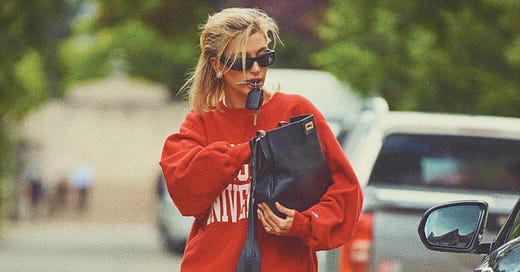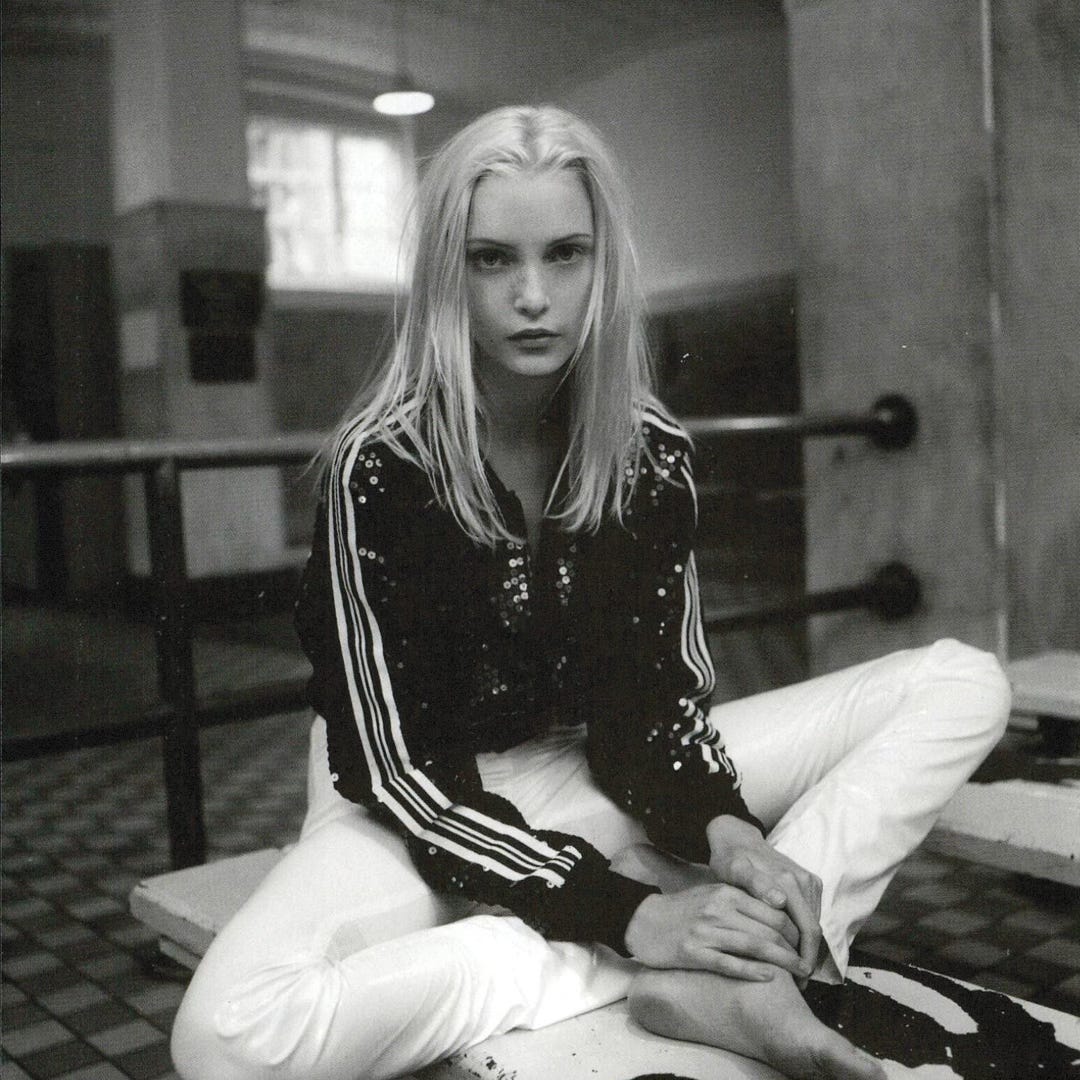Over the past few years, we’ve seen sweats and hats stamped with faux club logos dominate the fashion scene. It’s an aesthetic that embodies athletic clothes from the 1970s through the 1990s, widely embraced first by yuppies and preppies and then, well, everyone else. Now, history repeats itself. However, there’s no exclusivity to the look anymore. You don’t need a country club membership or an Ivy League scholarship. Instead, the head-to-toe retro look is a trend easily adopted by anyone. And it is unlikely to fade away anytime soon.
To understand why this look still resonates, it's worth tracing how it evolved from the tracks to the streets and even the runways. Sportswear, as we know it, evolved in the early 20th century and was worn exclusively for exercise. It was only after World War II that it infiltrated everyday fashion. In the 1950s and 1960s, brands such as Adidas and Champion started producing uniforms for professional and national teams. Adidas was at the forefront of producing both clothes and shoes that were showcased by athletes at events such as the Olympics and the World Cup (the Beckenbauer tracksuit and the Sambas are prime examples). However, these pieces were still aimed at performance, not style.
In the 1970s, things started to shift. Companies began to design products that aimed at style as well. The introduction of synthetic fabrics made them look bolder and lighter at the same time. It was during this time that Adidas introduced the three stripes and trefoil logo. While Adidas expanded its presence in soccer culture, Fila gained popularity in tennis culture. In the 1980s, with the rise of jogging, tracksuits and sneakers became acceptable for running errands, which blurred the line between sportswear and streetwear. In the 1990s, the style became a dominant force in pop culture. Sweats and sneakers became statements, worn by everyone from artists to athletes to supermodels off-duty. As such, they became the uniform of a generation.
Now, clothes and shoes from these decades—whether original pieces or simply ones that emulate them—are everywhere. Think: Ivy League sweatshirts, Fila polo shirts and shorts, or Adidas tracksuits, and streamlined sneakers with chunky socks. These pieces are combined with nostalgic signifiers to symbolize the merging of athletic and academic realms with fashion. Any sort of club counts.
Unlike the usual sportswear clothes and shoes, these pieces are sold in designer boutiques or through online drops. One of the most successful examples is Sporty & Rich, which produces vintage-inspired sweatshirts and T-shirts that look very “Princess Diana escaping the paparazzi”. Through various collections, the brand offers a range of 1970s to 1990s-inspired silhouettes. But the aesthetic goes beyond trendy brands. Brands such as Adidas, Nike, Puma, and Fila are also reissuing retro designs that pay homage to their past. A modern-day Samba or a faux-vintage tee nods to history while still feeling contemporary.
But what is it about retro sportswear that is so charming?
Part of its charm lies in nostalgia. There’s a sense of attachment to things we lived through and things we wish we had lived through. Millennials and Gen Z are obsessed with these decades, and fashion is one of the easiest ways to tap into that culture. For those who seek vintage clothes, there’s also an added principle of sustainability. Unlike modern fashion, sportswear was typically made with higher-quality fabrics, which were designed to withstand wear and tear. Likewise, in an era when much fashion is mass-produced, if a piece is vintage, it has a backstory. It is a way to embrace individuality, as a vintage piece is often a one-of-a-kind find. And when a piece simply emulates the design, it is ironic.
But there’s more to it than nostalgia. Another part of its charm lies in the aesthetic codes and authenticity. These references to the 1970s through the 1990s date back to a time when the focus was less on technology and more on expression. Ultimately, they are a reminder that fashion should be fun.
Now, you don’t have to be a member of a fancy club to dress the part. Retro sportswear lets you enter a world of references without taking any of it too seriously. Wearing a sweatshirt from a country club or university, whether authentic or not, is deliberately tongue-in-cheek. It’s less about belonging, more about borrowing the look and making it your own. In the end, the charm lies in the sense of humor stitched right into the seams, all while staying comfortable.


















That Vogue Italia spread from 1994, wow!!